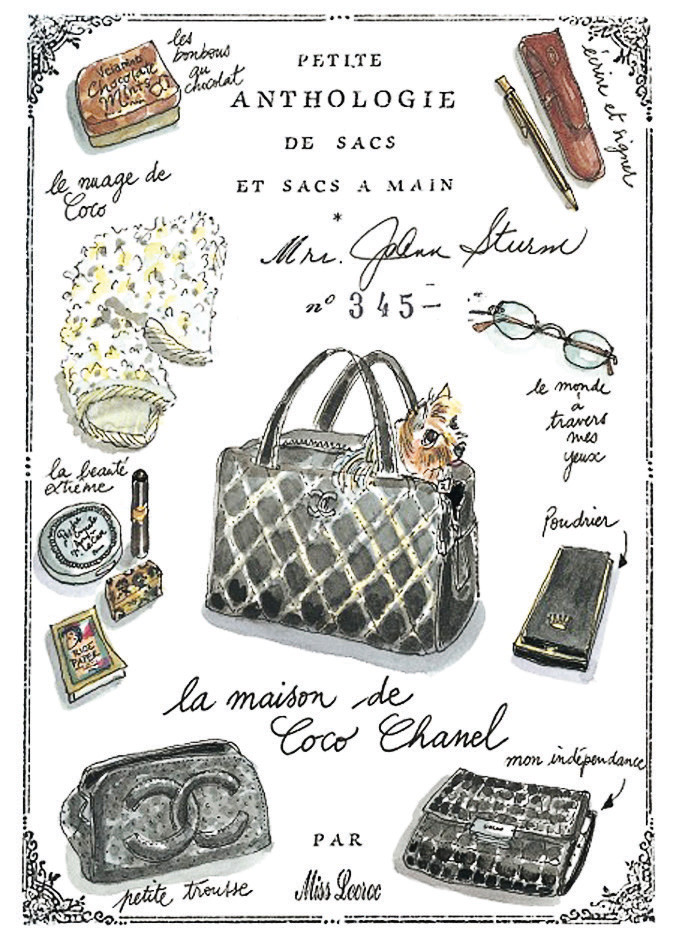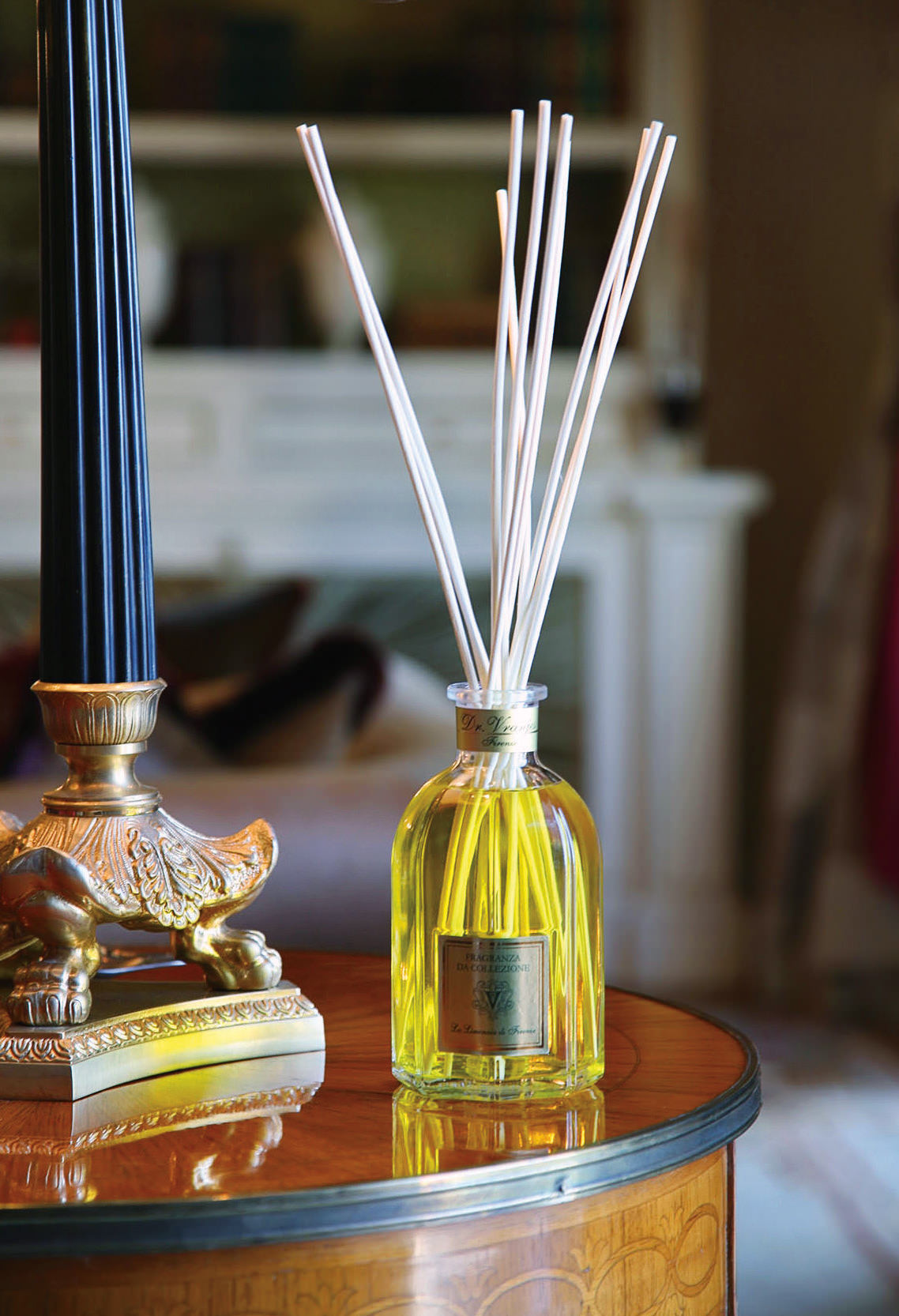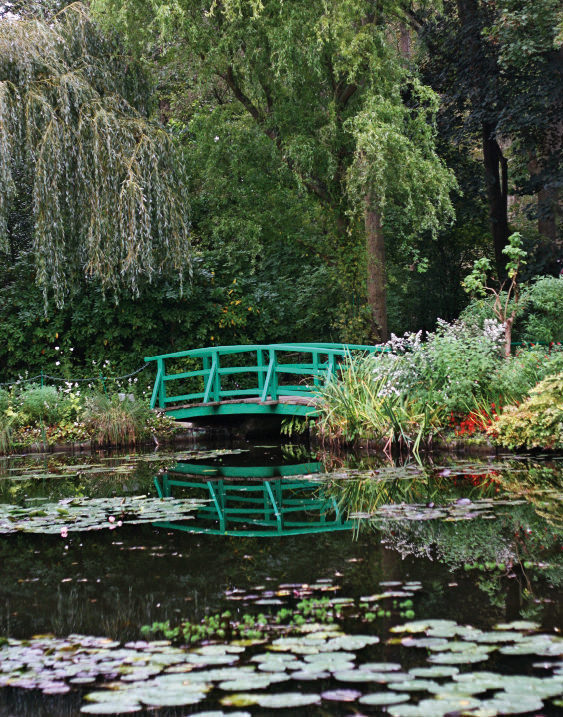-

Chanel No. 5 continues to be the world’s best-selling perfume.
-
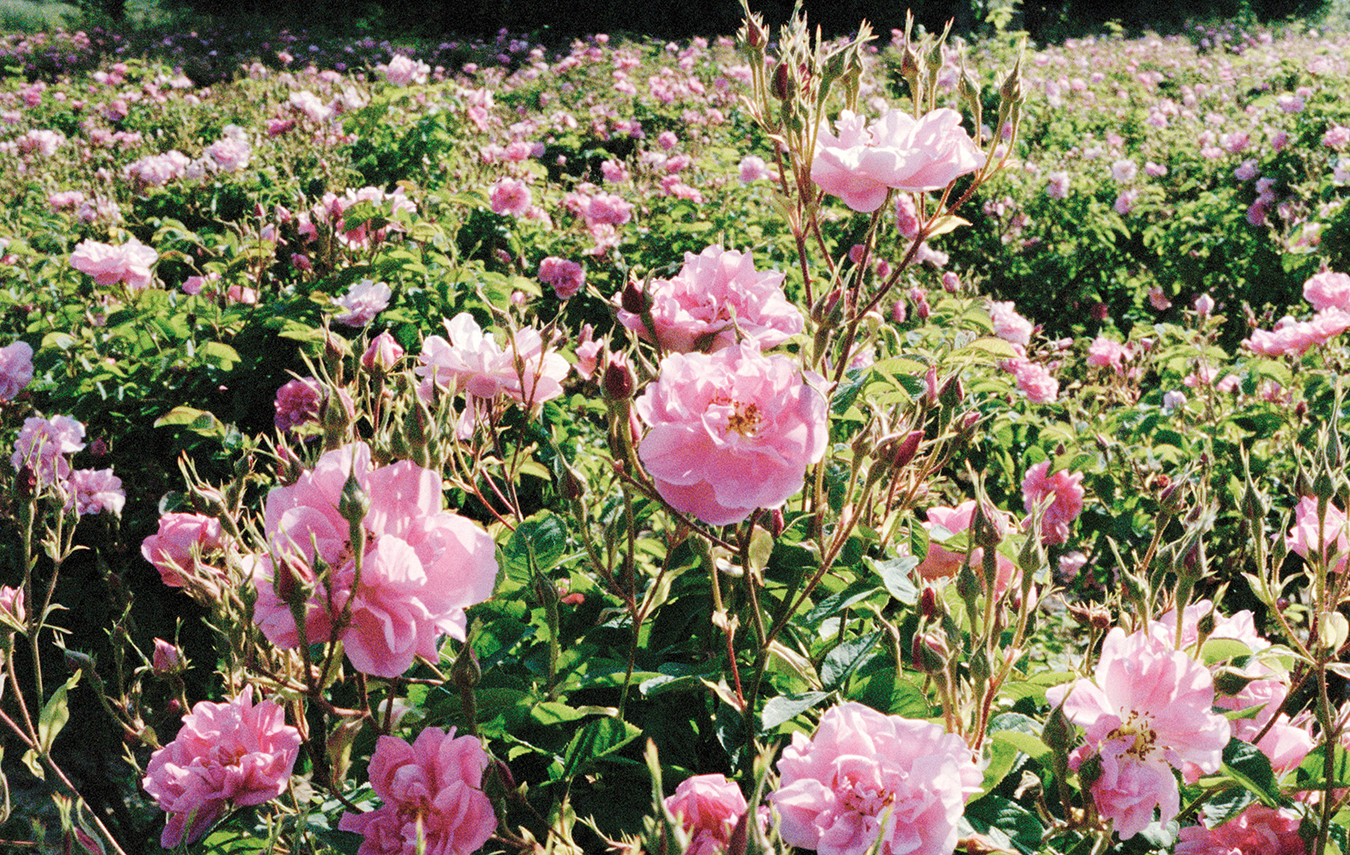
Rosa centifolia in bloom at the Mul family farm in Grasse, France.
-
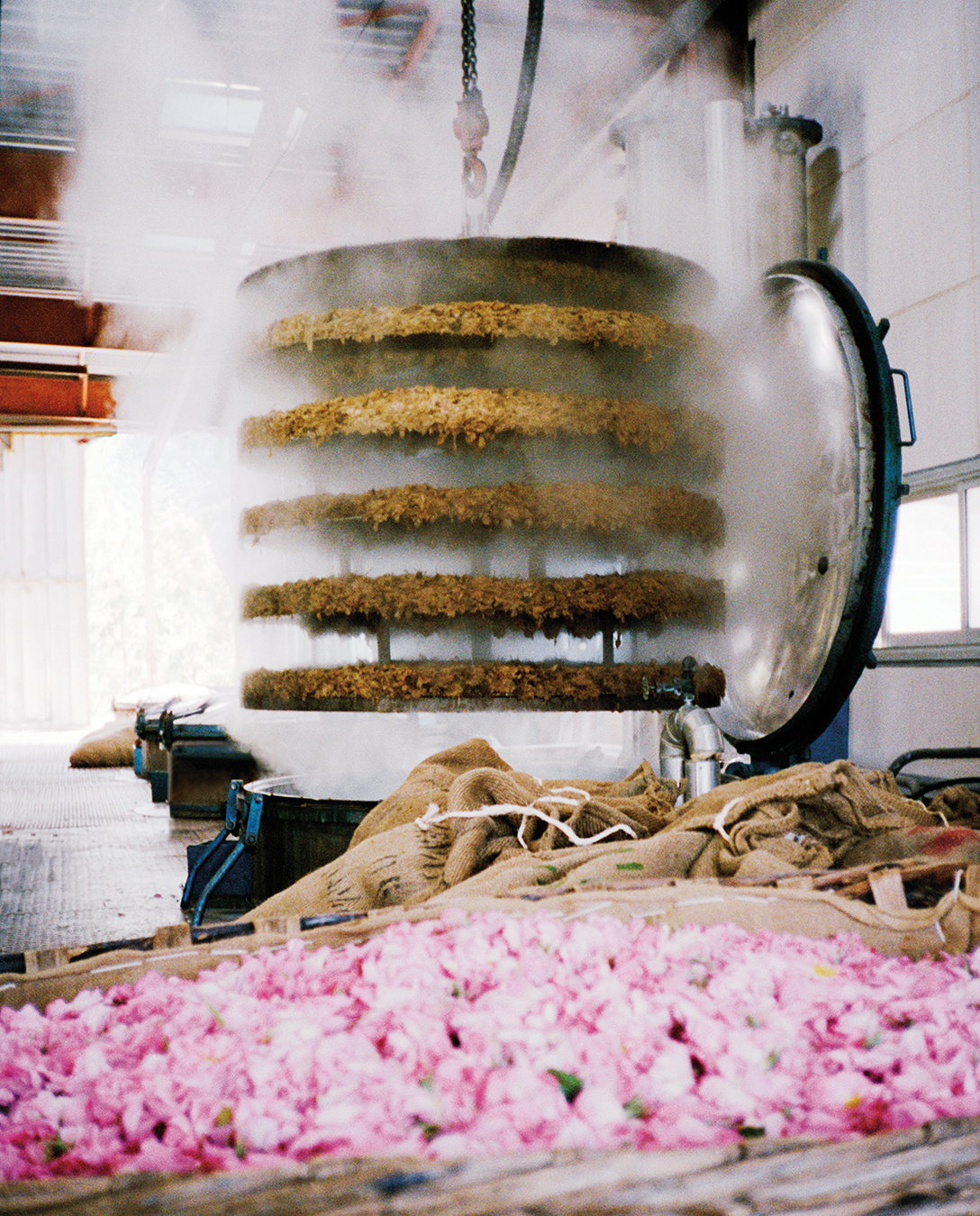
Layers of “spent” roses following the extraction process.
Chanel No. 5
Fields of Grasse.
Long before a perfume kisses your skin, the fragrance-creation process begins with a flower. For Chanel No. 5, that flower is Rosa centifolia. In full bloom, Rosa centifolia, the cabbage rose with 100 petals, is a delicate pink rose with light, roundish leaves and fine prickles. Also known as Rose de Mai, it is a demure, small-petalled variety. It is grown in Grasse, a small town tucked in the hills along the Côte d’Azur.
Gabrielle—Coco—Chanel launched Chanel No. 5 in 1921. Its success was immediate, and since its creation, Chanel No. 5 has been the world’s best-selling perfume. (One product from the Chanel No. 5 portfolio is sold every six seconds.) Yet its success can be measured by more than just numbers sold: it has become a cultural monument. Notably, in 1959, Chanel No. 5 joined the permanent collection at the Museum of Modern Art in New York, and in 1964, Andy Warhol made the fragrance the subject of nine screen prints. Some people in the perfume industry refer to this near 90-year-old insitution as “le monstre”; sales in 2003 topped an astonishing €180-million ($282-million Canadian). The process involved in creating Chanel No. 5 is a revered secret, although two main ingredients are public knowledge: Rosa centifolia and jasmine.
Perched in the hills above Nice and Cannes, Grasse’s flower fields have long been considered the world’s capital of perfume, producing the majority of France’s floral essences for the perfume industry. Grasse is located far enough inland that it is sheltered from the sea air, and it has fertile soil and a sunny and temperate microclimate, which make it ideal for flower farming. Come spring and summer, the air is scented by the flowers in the fields.
The perfume industry began in the 16th century as an extension of the glove industry. Grasse had been a leather and tanning centre, and the flower-farming business blossomed with the growing fashion of perfumed gloves. Petals were pressed into animal fat and then rubbed onto the gloves to disguise the scent of the leather. When the nobility abandoned the fashion of wearing gloves, the perfume industry remained, and flourished. Grasse was home to hundreds of flower fields, but today their popularity has faded as a result of the soaring value of real estate and the explosion of sophisticated synthetic ingredients. Only the finest farms remain.
“We do not compromise when it comes to quality,” says Jacques Polge, Chanel’s in-house perfumer. “Once a formula is created, we conserve and are faithful to it. Coco Chanel used the roses and jasmine of Grasse for No. 5, and we continue to use the roses and jasmine of Grasse.” Polge directs the house’s perfume collection with precision. He is only the third Chanel perfumer. (The first was, from 1920, Ernest Beaux, who created among others No. 5 and No. 22 under Coco Chanel’s direct artistic direction. The second, Henri Robert, was the creator of Cristalle and Pour Monsieur.) Polge has authored a noteworthy list of fragrances including Coco, Allure, Coco Mademoiselle, and, most recently Bleu de Chanel.
Rosa centifolia blooms only once a year for about five weeks in May and early June, with prime picking between May 15 and 25. The aroma is overwhelming and very particular: fragrant and voluptuous, but with an edge.
Polge grew up in the South of France, near Avignon. “I would go to Grasse for the summer with my family, and go to Cannes to swim in the ocean. From Nice to Cannes, Grasse was a garden when I was a child,” he says. “There were fields of roses, jasmine, and violets. Of course, my surroundings as a child lead me to perfumery. We are all influenced by our childhood.”
The glamorous set who daub their neck and wrists with Chanel No. 5 are a world removed from the Rosa centifolia harvest in Grasse. The rose plantations are relatively small and mostly operated by individual farmers and their families. In 1939, the Grasse region processed 750,000 kilograms of roses. In 1946, the quantity declined to about 400,000, and in 1950, the production fell to 300,000 kilograms. “It is more profitable to be a renter of the land than keeping it for flowers,” says Joseph Mul, who is among the fourth generation of Muls whose treasured Grasse farm has grown flowers exclusively for Chanel since 1987. “This [farming flowers] is labour of a product that is completely handpicked—of course it’s expensive.”
The Mul family farm is the largest in Grasse, with four hectares of jasmine, and seven hectares of Rosa centifolia producing 50 tonnes of roses each year. Joseph Mul is a soft-spoken man and he is passionate about his work. His face is sun-baked, and his hands are rough and weathered, a telltale sign of years of labour in the fields. “Plants are like children,” says the seventy-something patriarch. “You must protect them while they’re growing, take care of them, cherish them, and give them the right attention.”
Rosa centifolia blooms only once a year for about five weeks in May and early June, with prime picking between May 15 and 25. The aroma is overwhelming and very particular: fragrant and voluptuous, but with an edge. During the harvest, dozens of workers move down the rows, quickly snapping the roses’ heads off and gently slipping them into pouches. When the pouches are full, they are emptied into burlap sacks, which are loaded on a flatbed trailer and pulled by a tractor to the extraction factory, an unassuming two-storey warehouse-like building at the edge of the fields. “There is no time for the flower to rot and lose the quality, because it is picked and transported directly to the plant,” says Mul.
In the plant, the roses are dumped into one of the vats, called extractors. There are five levels in each extractor, each separated by a giant disc-like grille so that the flowers aren’t crushed. Once the vat is full, a heavy lid is clamped into place. Hexane, a highly volatile solvent, is pumped into the vat, dissolving the molecules in the flowers and extracting their principal fragrance. When the process is complete, the five layers of “spent” roses (now brown in hue) are pulled out and discarded in a regulated compost.
“During the harvest, we work for as many hours as it takes,” says Mul. “We don’t count the hours. We start when we pick the roses and we stop when the roses are done.” Four hundred kilograms of roses yields one kilogram of concentrate (worth €3,000, or about $4,300 Canadian), an orange-brown, viscous liquid rich with fragrance. The concentrate is then bathed with pure ethyl alcohol to separate the plant waxes from the precious absolute. The concentrate in turn yields half a kilogram of absolute (worth €5,000, or about $7,200 Canadian). Absolute is an irreplaceable ingredient in the fine perfume industry. The chemistry of this flower’s oil is so complex and intricate that it is impossible to reconstitute it completely, even in a lab.
Joseph Mul guarantees quality, not quantity, as he is challenged by the weather and aphids, the main pests that make tunnels at the root of the flowers and dry the plant out. But he is quick to add that the Mul farm takes the precaution of growing 20 per cent more flowers than needed, just in case the crop is attacked. “We have never lost a harvest,” he says. Moreover, only organic fertilizers are used, and the soil is tested regularly.
The Muls work closely with Jacques Polge, who frequently analyzes the absolute. “Year after year, I need to ensure that Chanel No. 5 is reproduced to the letter,” says Polge. “I am responsible for the liquid.”
There is real meaning behind the words “Haute Parfumerie”. Chanel reminds us of this with each of its creations. “No. 5, yes, it’s a number, our number. It’s the first couture perfume; it’s a form that has not aged and has transcended many fashion eras,” says Polge. “So, it’s true, it is iconic.”
A master composer, Polge pontificates, “Olfactory is a sense of which we don’t realize the importance,” he says. “All that passes [through] our nose—what we smell—is life. It’s what it means to be living.”


